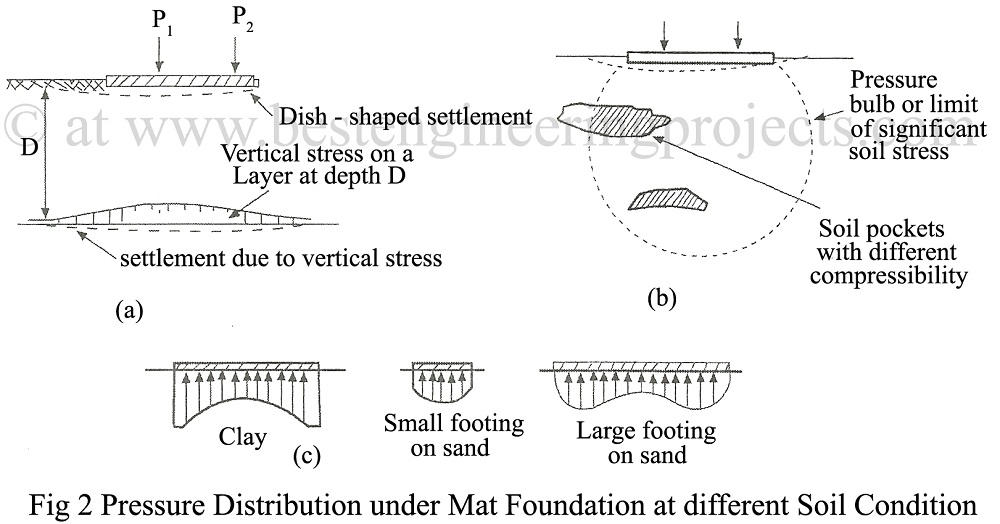Raft Foundation Design General Considerations
A mat supported on strong bedrock transmits the load in a relatively small area near columns. The pressure distribution on raft foundation will be as shown Fig. 1(a). If the mat rests on stiff or compact soils, the mat distributes the load to the subsoil in larger areas as shown in Fig. 1(b). If the mat rests on weak soil the pressure distribution on the mat tends to be uniform as shown in Fig. 1(c).
In raft foundation design, the stresses developed underneath the mat could be different from the calculated values due to following reasons.
- If there is a layer of compressible clayey soil extending to a great depth or if there is a compressible soil at lower depth, a greater compression is produced in the soil under the center of the footing causing a dish-shaped ground surface as shown in Fig. 2(a).
- If uniform soils under the mat and contain pockets or lenses with properties different from average, the mat will experience unequal settlement as shown in Fig. 2(b).
Spread footings and mat foundations are not subjected to equal pressures over the entire footing area. For footings on sands, the sand near the edge tends to flow out and reduces its bearing pressure. On clays, which are similar to an elastic material, the pressure near the edge is greater as shown in Fig 2(c).

